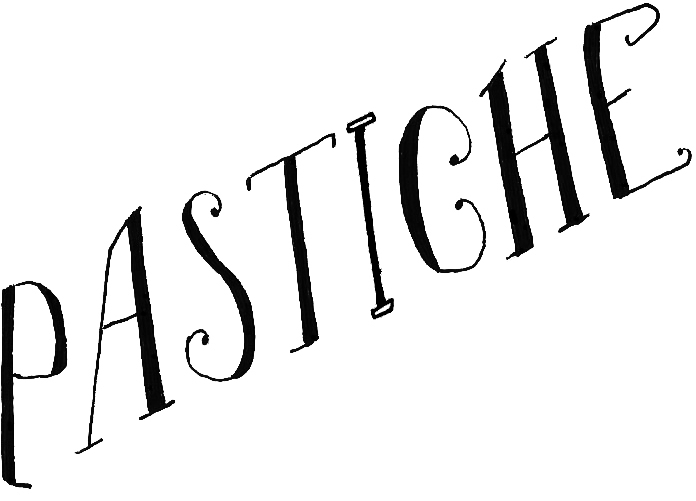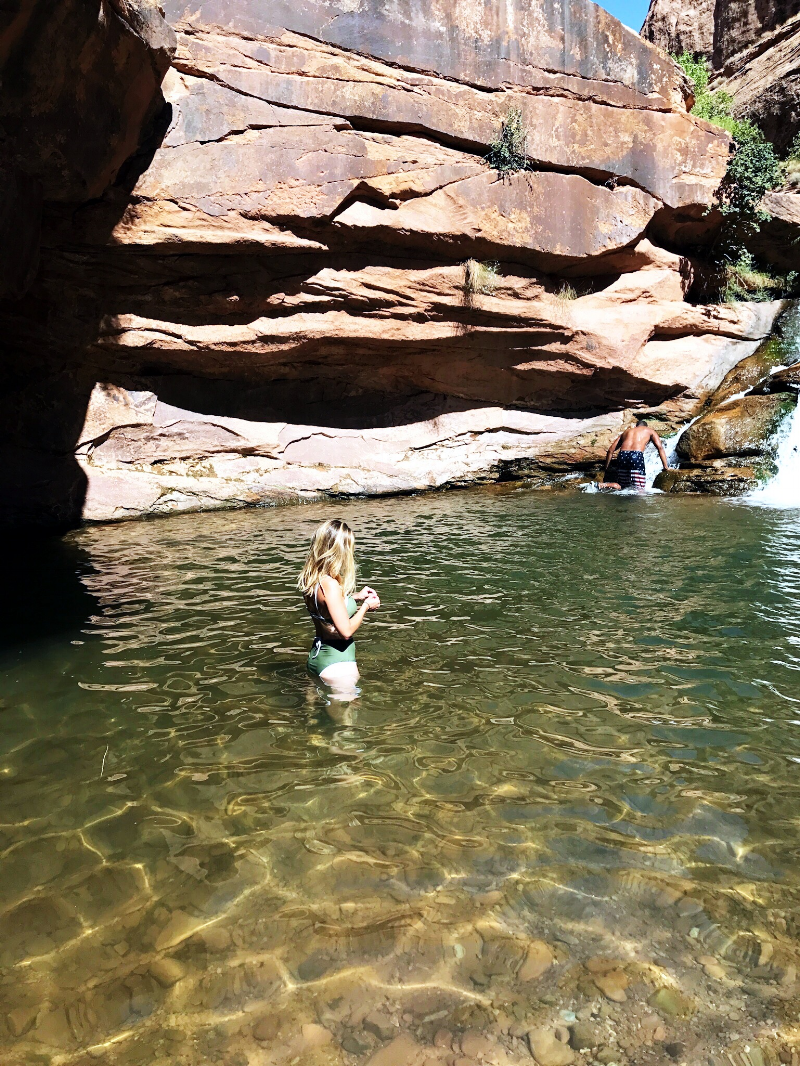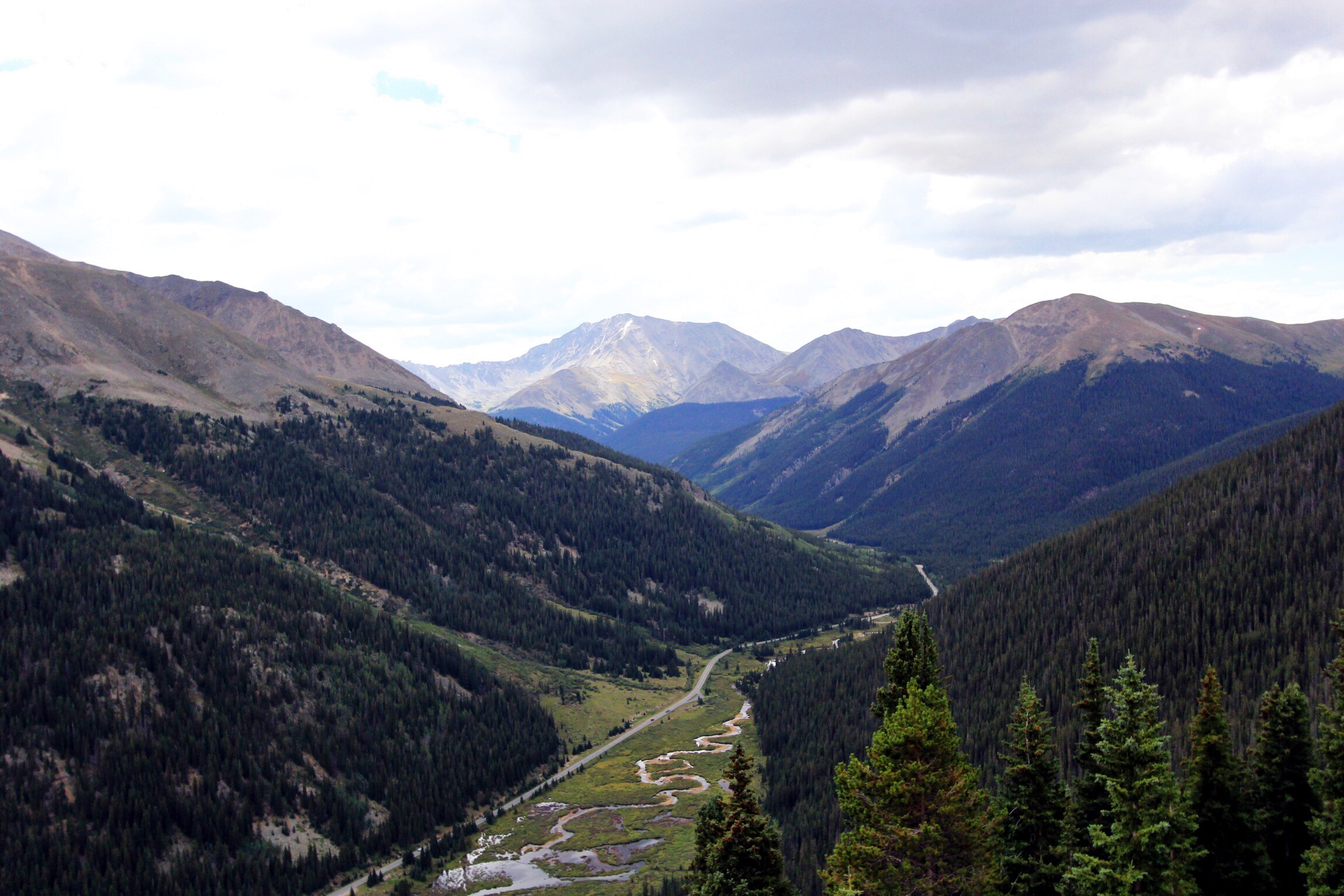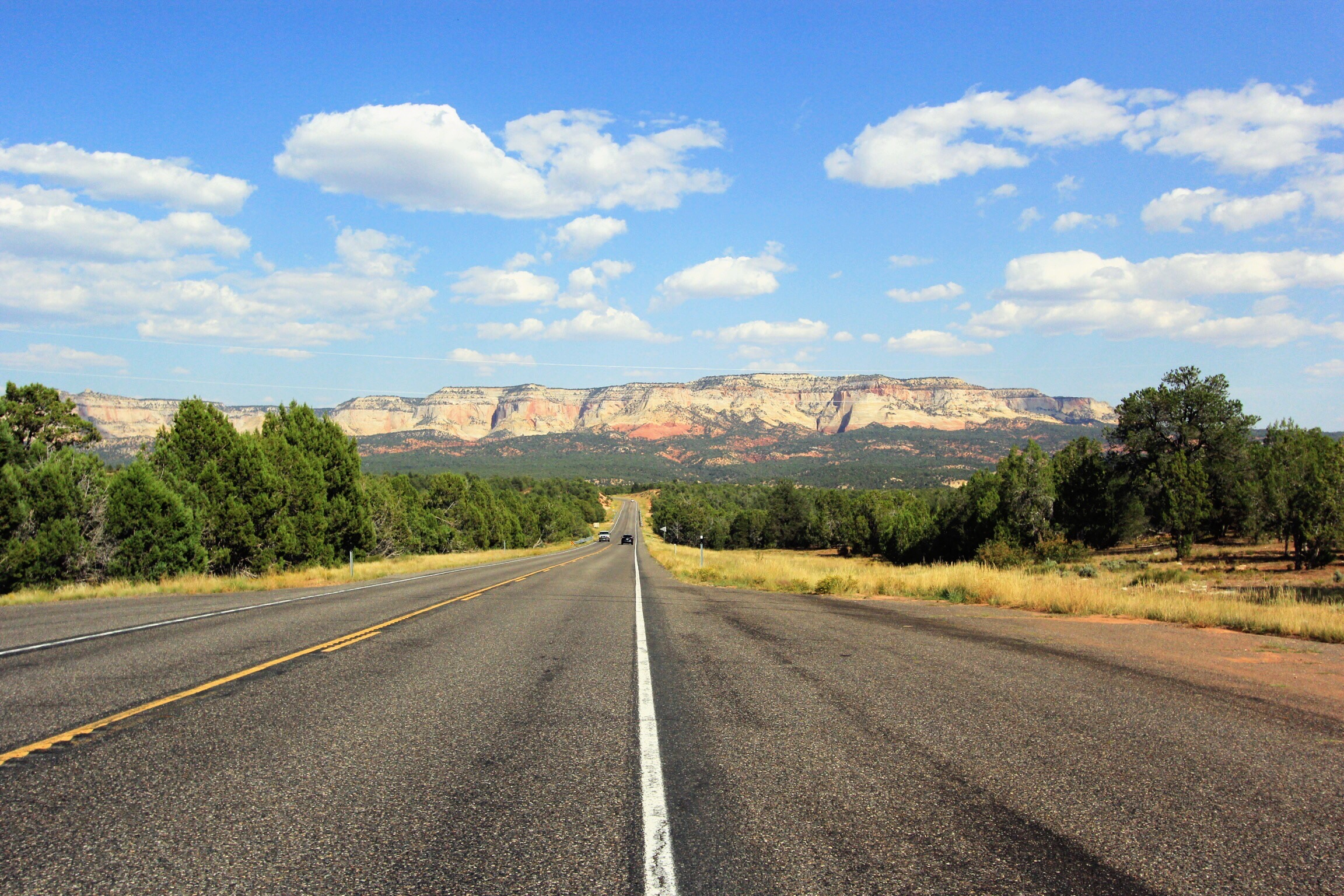Answering your questions about our road trip honeymoon
How’d you pack for such a long trip that entailed both camping and city life?
Not well, haha. We overpacked for the camping part (neglecting to remember that we’d rarely change clothes while camping and that the extreme heat made clothing unbearable, anyway) and under-packed for the city visits (I basically repeated the same few pieces for all of our city days; the only upside was an excuse to shop :). I’m a notoriously bad packer anyway (and so is Jon - it has resulted in a fight more than once when he’s for some reason decided to not bring any long sleeve shirts or any shoes besides sneakers with him) and this trip was no exception. The only part we did well was pack camping/city pieces in separate luggage so that theoretically we didn’t have to go digging through extra stuff to find what we were looking for. But, I say theoretically because we still managed to trash our car for the first half of the trip with clothing, shoes, and hiking stuff thrown everywhere.
But to get back to the question, we actually bought a lot of our camping materials at REI and Wal Mart in Denver, and then paid to ship all of it home from LA in the huge cooler and plastic chest we had bought. This happened to work for us because we were ready to invest in some camping stuff of our own after borrowing from my family forever. It allowed us to travel with much less baggage than if we were flying with everything from the start.
PS, in case you didn't see, here is the route we took.
Mill Creek waterfall and swimming hole
Any can’t-miss hidden gems that you experienced?
So many of the gems we experienced aren’t very hidden (which is a good thing!), but one thing sticks out. If you’re in Moab (for Arches, or for nearby Canyonlands) and you’re dying for a break from the heat, there’s a little waterfall/swimming hole hike called the Mill Creek Canyon waterfall hike. It’s less than a mile walk to get to it, and wading in the water (and cliff jumping, if you’re feeling daring) was exactly what we needed (with some beers) after days of unrelenting sun and heat.
Driving through the Rocky Mountains over Independence Pass
Looking back, what would you have changed about your route?
The only things, in our reflection thus far, that I would change about our route is that I would have driven out of the way from Denver to see Rocky Mountain National Park, and I would have taken the first night away from Flagstaff and spent it in Page, Arizona, visiting Antelope Canyon.
Our itinerary only had a few set-in-stone definites: a concert in Denver on the second night of our trip, and the dates of our booked Airbnbs in Joshua Tree and LA. The other driving force behind our timeline decisions was having to factor in arriving at campgrounds early to hopefully secure a first come, first served campsite. It was these factors that led us to believe we couldn’t fit in Rocky Mountain National Park. But in 20-20 hindsight, it was easier to secure a campsite (at most places) than I anticipated, and I think it would have been worth the extra hours and mileage to visit Rocky Mountain, even if just to drive through it (as opposed to hike).
The only reason we were unable to do Antelope Canyon is because we tried to add it to our itinerary last minute and unfortunately Antelope Canyon is accessible through guided tours only, unlike the other parks we visited. Therefore, all the tours were already fully booked. Our friends who had just visited (that were doing the reverse order of our trip, essentially; we actually met up with them in Moab for a spontaneous and much needed waterfall oasis hike) told us Antelope was ‘can’t miss.’ And by pictures, it certainly looks that way. We were really bummed to have missed it—next time!
If you had more time, what else would you have done?
In the months spent planning our trip, the most devastating cut we had to make from a time perspective was Yosemite National Park. It was a top priority for both Jon and me, and originally we had dreams of it being the last stop in our itinerary. But in combination with our other priorities, Yosemite was the one place that seemed like a stretch, geographically, especially considering we’d want to spend at least a few days there. We decided we’d make it back to Yosemite another time with some other Northern California stops. However, if we had had more time this trip, we’d absolutely have included Yosemite. Secondly, we were really taken with photographs of Havasu Falls in the Grand Canyon. From what we read, it is quite an ordeal to get there (it’s on Havasupai tribal land and requires a 10 mile hike each way), and we simply didn’t have the time to commit to this trip. Its blue-green water looks so beautiful, and not to mention vastly different from the rest of the canyon scenery; I would have loved to have experienced it.
Driving through Utah
Plus, a few takeaways that surprised us:
Or that we feel are at least worth noting...
On the scenery
The parks are absolutely, breathtakingly beautiful and just plain wild to see (especially being from the Northeast), but so is all of the scenery surrounding the parks and along many of the drives throughout Colorado, Utah, and Arizona. You could conceivably drive the exact same route we did, in a quarter of the time, making shorter stops and walking only a few steps outside of your car, and be absolutely blown away by the sight seeing. I, of course, wouldn’t recommend that, because the hikes we did were our very favorite parts of the trip, but we talked several times about how incredible everything is to look at there... even the views from freeways! One of the best parts was watching the climate and environment and scenery change so drastically from state to state or area to area, sometimes suddenly and other times more gradually. I found myself with camera in hand and lens cap off for so much of the long drive.
On the heat
The heat is possibly one of the largest factors to consider (that we frankly didn’t really consider at all before being physically in it). The July/August temperatures in the Southwest (particularly Zion, but Arches and Canyonlands, as well) are truly no joke. There are signs everywhere warning hikers against midday hikes and advising people to drink 4 quarts of water per day. And yes, we had read snippets about this beforehand, but we truly didn’t comprehend how active of a player it would be in our daily itinerary. We imagined spending our days in the various parks hiking and exploring. But we learned very quickly (as in, about a half hour into setting up our first campsite at Canyonlands at 10:00 am) that unless you are very, very resilient and insensitive to heat, it is debilitating. From that day forward, we started every single hike before sunrise and did any other exploring in the evening. We largely spent the hottest hours of the day (10-4, I’d say), trying to actively avoid the sun, whether that meant lying in the hammock in the shade at our campsite in Canyonlands, hanging with our feet in the river at our campsite in Zion, using the hotel pool attached to our campsite in Zion, or driving to the next destination during the hot daytime hours. This was something we did not accurately anticipate, and so I was really happy to be camping because it made downtime spent reading, chatting, drinking (ha) seem purposeful, laid-back, and guilt free (I think I may have gotten a little stir crazy if we were in a hotel or something—the guilt of just chilling in an air conditioned room would have driven me batty). That being said, tent camping meant just that—living and sleeping without air conditioning. Sleeping in the heat was very difficult and as a result we mostly slept horribly (particularly in Zion), which was sort of a running joke at the time.
On camping
In what should have been a shock to no one, camping in the Southwest is just plain different than what we’re accustomed to in upstate New York (assuming your frame of reference, like mine, is camping in the Adirondacks). In many of the campgrounds in the desert, the ground is hard and sandy, and the winds can be pretty strong. Trees might be more sparse, and water might be non-existent. The temperatures can remain very, very hot until 1 or 2 in the morning when it just starts to cool off, and so the idea of crowding around the campfire for warmth and coziness doesn’t always come to fruition (although we still had one every night for both cooking and ambiance). That being said, our overnight experience was drastically different depending on location—camping near the Grand Canyon had chillier temperatures at night; Canyonlands was similarly pleasant, although not quite as cold; Zion felt like it never dropped below 90 degrees—and yet all three places had the same grueling daytime temperatures.
On the park experience
Some parks are designed more for hiking and others are more geared towards quick overlook points. This is sort of difficult to get a feel for until you’re physically experiencing a park because research ahead of time will make you think that every park has hikes (because they do). However, not all hikes and trails are created equal, and some are more worth the time and effort than others, in our experience. For instance, Canyonlands (and the Grand Canyon for that matter), probably due to the nature of it, is not the best park for hiking a variety of trails with different views and experiences. However, it has several stunning and impressive overlook points that involve little (.5 miles or less) to no walking but do require driving all over the park, and the options it does have for getting to the bottom of the canyon involve either very, very long hikes or some sort of extra curricular excursion like an off-roading ATV tour (which can be pricey but worth it, we’ve heard). Conversely, Zion National Park is full of a variety of fabulous hikes, ranging in length, level of difficulty, and views. These are important considerations to have in planning your trip: where, if anywhere, do you want to hike; where, if anywhere, are you OK just catching some views; and where, if anywhere, do you want to commit to just one very long, intense hike? This was a concept that no one had really articulated to us beforehand, and although our planning worked out great (it's sort of hard to have a bad experience in these beautiful parks), we'd more carefully consider these factors next time.
Is there anything else you would love to know, or anything you're curious about? I'd also love to know about your own experiences executing a road trip or visit to the National Parks. I'm already excited to plan our next one!




